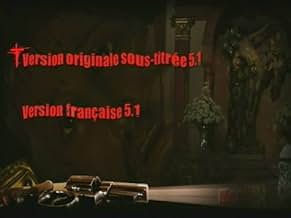IMDb-BEWERTUNG
6,8/10
4400
IHRE BEWERTUNG
Füge eine Handlung in deiner Sprache hinzuThe writer F. Vallejo returns to Medellin after an absence of over 30 years. He meets 16-year-old Alexis. Alexis is the kind of killer who knocks people off on command. The two are immediate... Alles lesenThe writer F. Vallejo returns to Medellin after an absence of over 30 years. He meets 16-year-old Alexis. Alexis is the kind of killer who knocks people off on command. The two are immediately attracted to each other.The writer F. Vallejo returns to Medellin after an absence of over 30 years. He meets 16-year-old Alexis. Alexis is the kind of killer who knocks people off on command. The two are immediately attracted to each other.
- Auszeichnungen
- 3 Gewinne & 3 Nominierungen insgesamt
Empfohlene Bewertungen
Prepared as we are for the image of Columbia that CNN shoves down our throats- full of Narcos, Paracos and desperate politicians-, there is no way to predict the surreal way of life the characters in this movie pass through. This is a film that penetrates into a very real Medellin, where nothing is certain and everything is so vulnerable that human life seems to exist only the instant in which it takes place. Medellin is like Fernando- the main character-, it is like his way of walking through a church in the feverishly catholic ambient of Latin America with his sixteen year old murderer lover- who is actually more like an angel fallen from grace. Alexis- the young shooter- is the result of a less than miserable way of life, where poverty and violence rape viciously at each other, almost to a point of neutralization, what seems perverse is in the end the most innocent. This film is strong and profound, it should be forced on all news spokesmen with Colombian corpses in the background: `Lady this is Medellin, not Switzerland'.
10jetwimp
A middle-aged Colombian writer, disgusted with life and contemptuous of religion, becomes involved sexually and romantically with teen-aged Medellin boys who kill effortlessly and with little provocation. At first appalled, he eventually grows addicted to the deaths the boys bring about, their magical ability to resolve the annoyances of everyday life, such as noisy neighbors and aggressive cab subway riders. The plot has some really astonishing surprises, and the taut nearly flawless script (in Spanish) is a treasure. The film , obviously the product of a philosophically inclined mind (Schroeder studied philosophy at the Sorbonne), is a thinking filmgoer's feast and works on many different levels. The main character's ambivalence about religion (the film's title, and the fact that the writer keeps finding himself in cathedrals) furnishes much matter for reflection. This film is not for everyone--- it is, even for these times, shocking. Those more comfortable with the blowsy and predictable product issuing from Hollywood committees should probably avoid it. But those who treasure the ability of film to explore provocative and original ideas will love it.
10jvframe
Our Lady Of Assassins showed at the Brisbane International Film Festival. It left me initially distraught and other members of the audience obviously felt the same. After a bit of thought, I realised that it was indeed a powerful and beautifully created way of presenting the desperate nature of life in Medellin. The main character, who was born and raised in the town, remembers how potentially violent it was even 40 years earlier, yet seems to be shocked by how much it has decayed. It is strange that he is also quite complicit in inciting violence, while seeming to be just looking for love.
The film forces the audience to question the day to day value of life and just how much violence we can allow ourselves to tolerate. But in Medellin the solution is certainly not in the hands of just one person.
A great trio of films showing the broad story of the cocaine phenomena would be "Our Lady Of Assassins", Ted Demme's "Blow" and "Traffic".
The film forces the audience to question the day to day value of life and just how much violence we can allow ourselves to tolerate. But in Medellin the solution is certainly not in the hands of just one person.
A great trio of films showing the broad story of the cocaine phenomena would be "Our Lady Of Assassins", Ted Demme's "Blow" and "Traffic".
Our Lady of The Assassins will have you either loving it or hating it. It polarizes because it never compels as a movie itself, but is laid out before each person, needing him or her to internalize the film. The movie speaks of living in a Columbian drug town and the irony as people get shot everyday by moral-less teens set against the beautiful city and sky. But the main character, an old gay writer, is never engaging or as articulate and thoughtful as one would expect from the "best known grammarian" from Columbia. In fact, as grammar is rigidly structured, so are the writer's banal comments about 'time being what you want it to be' and 'life only being lived to die.' The musings have been heard before, but with greater clarity and depth. There is no epiphany to be associated with any of his sayings. However, he meets a young former gang member, marked for death, named Alexis and they fall in love. The film is so detached that their love is the closest element to emotion, and still one cannot understand why this boy would sleep with a man who incessantly whines constantly. The shocking life in Medellin is the most compelling aspect of the movie and the movie still has points, it's just that they are not nearly poignant enough. They are shown by the director, but never cohesively placed into an argument. I really wished I could have liked this movie.
Barbet Schroeder's Our Lady of the Assassins is a perplexing film. Yet, it is ultimately rewarding in ways that most films aren't.
Shot in high definition digital video, the film has an immediacy to it that cannot be simulated by film. At first, the immediacy seems to cheapen the look and one wonders what Schroeder was thinking when he decided to undertake this format. Yet as the complexity of the story progresses, we seem to be "taken in" by the video's hypnotic effect and we realize that we are viewing a medium with its own look, feel and characteristics and we accept it.
About an older man who befriends and enters into a relationship with a young ex-gang member, the story takes a while to unfold. In the beginning it seems all but pointless, yet within the hour, we are caught up in a film of overwhelming depth and emotional power. Schroeder deserves tremendous credit for having the courage to make a movie in which the main character openly denounces the church and where themes of political corruption and anarchy in a real world setting actually exist.
Most disturbing is that the themes in this movie ring true with an authenticity that cannot be challenged. We are simultaneously horrified yet held captive by a reality which we don't want to believe exists but that we know already does, not only in Colombia, where the film is set, but elsewhere as well. Schroeder is a master here of making the "city" of Medellin just as much a character as the protagonists. He charges the environment with an electricity that seems to pervade the screen and crawl into our psyches.
Unfortunately it is the medium itself which may prevent Our Lady of the Assassins from becoming a commercial success or as being taken seriously by a lot of people. But film purists and those who enjoyed the gritty realism of similar films like Pixote and Santa Sangre, should love this one.
Shot in high definition digital video, the film has an immediacy to it that cannot be simulated by film. At first, the immediacy seems to cheapen the look and one wonders what Schroeder was thinking when he decided to undertake this format. Yet as the complexity of the story progresses, we seem to be "taken in" by the video's hypnotic effect and we realize that we are viewing a medium with its own look, feel and characteristics and we accept it.
About an older man who befriends and enters into a relationship with a young ex-gang member, the story takes a while to unfold. In the beginning it seems all but pointless, yet within the hour, we are caught up in a film of overwhelming depth and emotional power. Schroeder deserves tremendous credit for having the courage to make a movie in which the main character openly denounces the church and where themes of political corruption and anarchy in a real world setting actually exist.
Most disturbing is that the themes in this movie ring true with an authenticity that cannot be challenged. We are simultaneously horrified yet held captive by a reality which we don't want to believe exists but that we know already does, not only in Colombia, where the film is set, but elsewhere as well. Schroeder is a master here of making the "city" of Medellin just as much a character as the protagonists. He charges the environment with an electricity that seems to pervade the screen and crawl into our psyches.
Unfortunately it is the medium itself which may prevent Our Lady of the Assassins from becoming a commercial success or as being taken seriously by a lot of people. But film purists and those who enjoyed the gritty realism of similar films like Pixote and Santa Sangre, should love this one.
Wusstest du schon
- WissenswertesFilm debut of Anderson Ballesteros.
Top-Auswahl
Melde dich zum Bewerten an und greife auf die Watchlist für personalisierte Empfehlungen zu.
- How long is Our Lady of the Assassins?Powered by Alexa
Details
- Erscheinungsdatum
- Herkunftsländer
- Offizieller Standort
- Sprachen
- Auch bekannt als
- Our Lady of the Assassins
- Drehorte
- Produktionsfirmen
- Weitere beteiligte Unternehmen bei IMDbPro anzeigen
Box Office
- Bruttoertrag in den USA und Kanada
- 525.330 $
- Eröffnungswochenende in den USA und in Kanada
- 56.069 $
- 9. Sept. 2001
- Weltweiter Bruttoertrag
- 624.525 $
- Laufzeit1 Stunde 41 Minuten
- Farbe
- Sound-Mix
- Seitenverhältnis
- 1.78 : 1
Zu dieser Seite beitragen
Bearbeitung vorschlagen oder fehlenden Inhalt hinzufügen

























